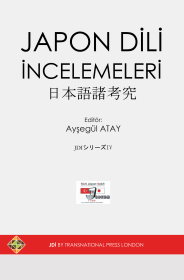Japoncadaki Ettirgen Yapılar ve Türkçeye Aktarımları
Causative Structures in Japanese and their Translation to Turkish
Author(s): Ümmühan Çiftçi
Subject(s): Language studies, Theoretical Linguistics, Morphology, Translation Studies, Turkic languages
Published by: Transnational Press London
Keywords: Causative structures; - (s)aseru; shieki; Japanese; Turkish;
Summary/Abstract: The causative structure, which is seen as a complex, difficult to explain and understand grammar topic, shows itself in various forms in Japanese as well as in Turkish. In Japanese, the causative structure is called shieki and the auxiliary verb -(s)aseru is the affix which makes an action causative structurally. The causative structure is created with this affix addition to the unconjugated root part of transitive or intransitive verbs. However, when transferred into Turkish, the causative structure in Japanese which is created with the auxiliary verb - (s)aseru may not have one-to-one correspondence in terms of structure and meaning. In addition, as a result of comparing causative structure in these two languages morphologically, different Japanese causative forms appear. Apart from the basic structure of causative meaning in Japanese, there are also examples of causative structure that the auxiliary verb -(s)aseru is combined with the form of (te + yaru). In this study, Japanese phrases with causative meaning were analyzed in both structural and semantic framework. And though -(s)aseru auxiliary verb is used as the key of causative, structures with different meanings other than causative have also been given. Besides, utilizing example sentences from Minna no Nihongo (Japanese for all) and various other grammar books, how these structures exist in Japanese has been elaborated on, and semantic features encountered when transferred into Turkish have been categorized.
Book: Japon Dili İncelemeleri / 日本語諸考究
- Page Range: 153-167
- Page Count: 15
- Publication Year: 2018
- Language: Turkish
- Content File-PDF

